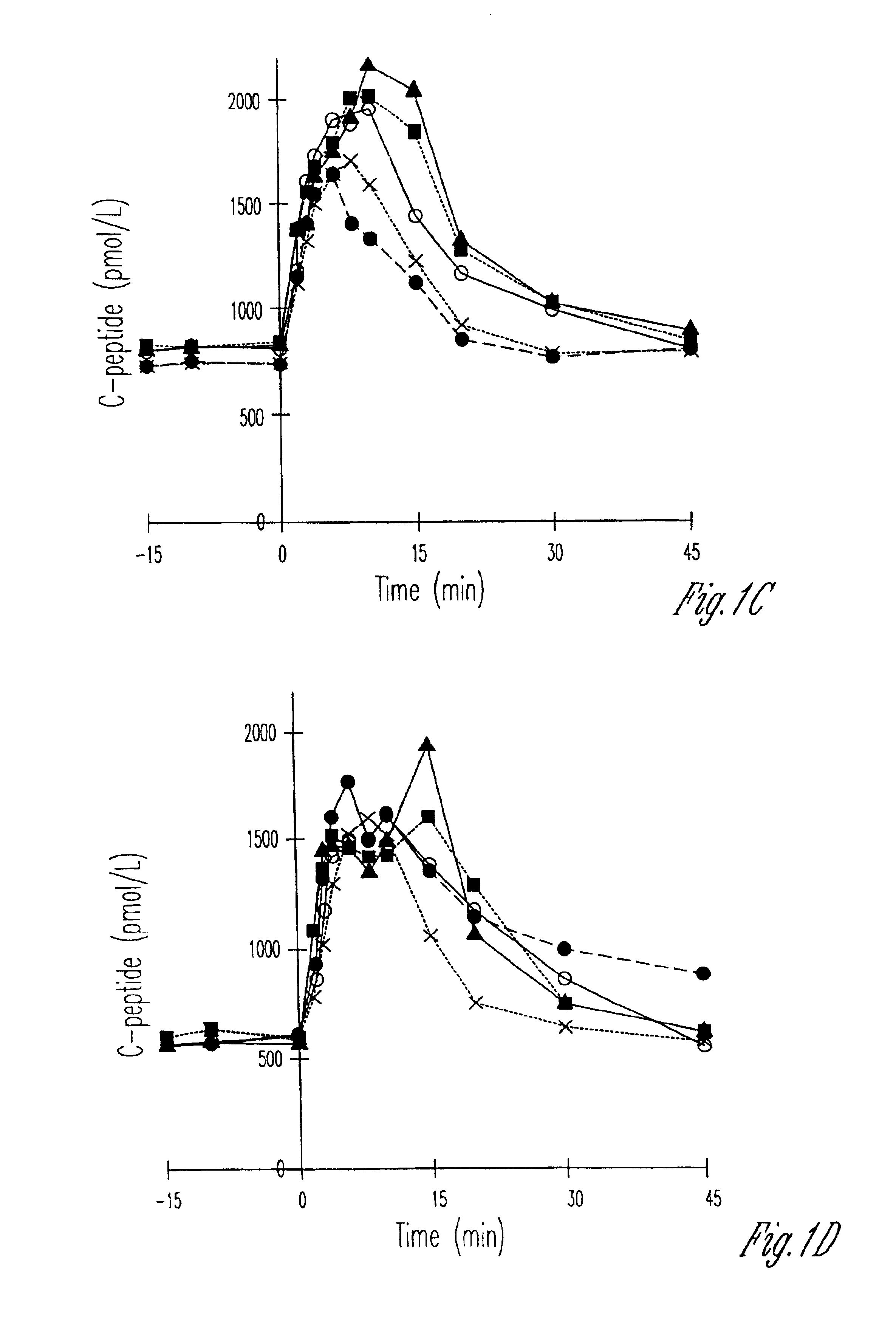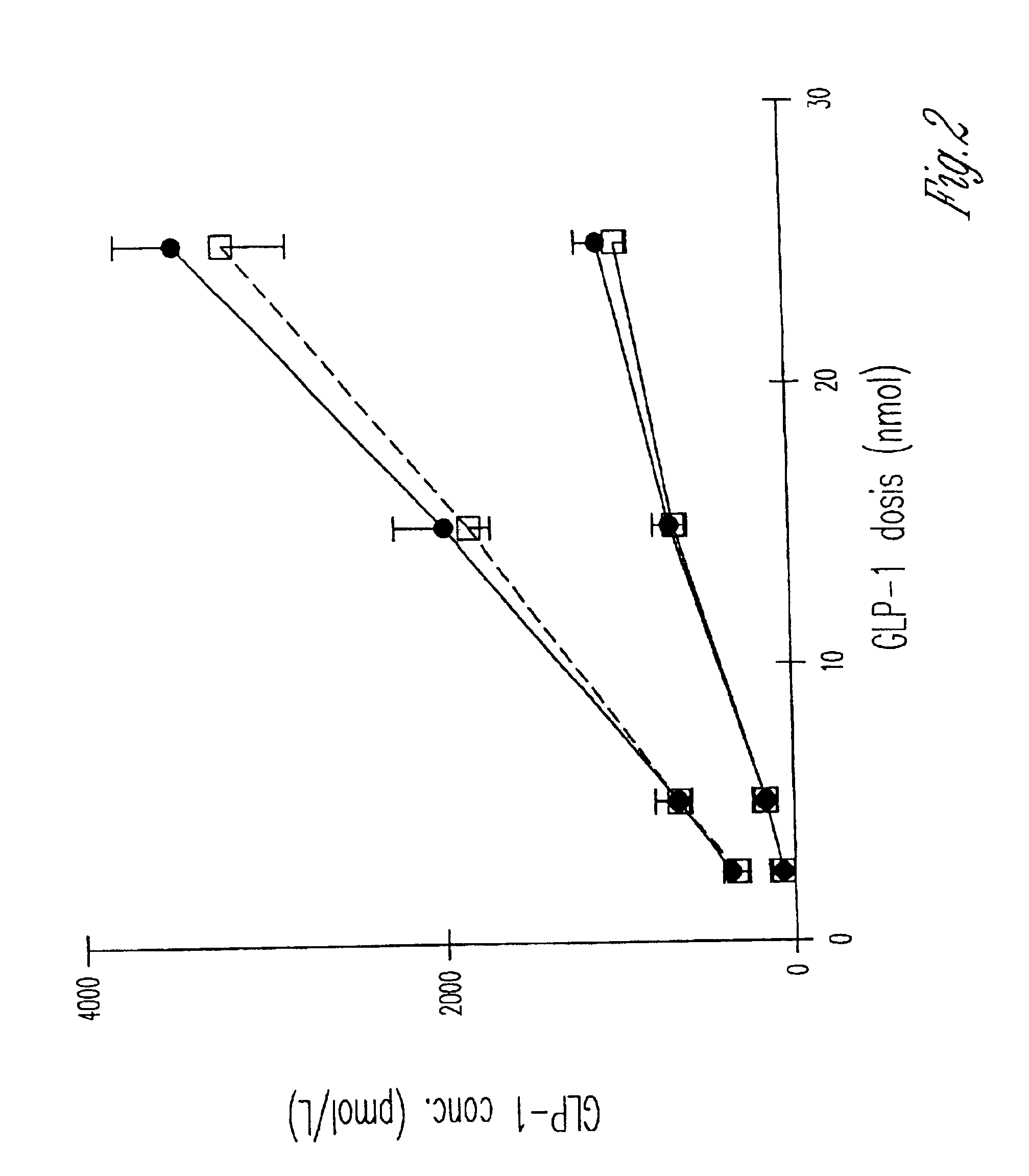GLP-1 as a diagnostic test to determine β-cell function and the presence of the condition of IGT and type-II diabetes
a type-ii diabetes and -cell technology, applied in the direction of peptide/protein ingredients, extracellular fluid disorder, metabolic disorder, etc., can solve the problems of deterioration of glucose control, considerable patient discomfort and pain, and time-consuming, and achieve easy and reproducible testing of -cell function, stimulate insulin secretion, and test the effect of -cell function
- Summary
- Abstract
- Description
- Claims
- Application Information
AI Technical Summary
Benefits of technology
Problems solved by technology
Method used
Image
Examples
examples
[0035]The present study was divided into three parts. The aim of part one was to establish dose-response relationships for GLP-1 stimulation with respect to insulin secretion (with 2.5, 5, 15, and 25 nmol of GLP-1) and compare the responses to that seen after a standard meal test and after a glucagon test (1 mg I.V.). In part two of the study, the aim was to evaluate the performance of the selected dose in a larger group (12 type II diabetic patients and 12 matched healthy subjects) and to examine the effect of GLP-1 with concomitant infusion of glucose elevating plasma glucose to 15 mmol / l. In part three, the aim was to compare the combined glucose+GLP-1 injection from part two with the established hyperglycemic clamp with arginine used for determination of maximal secretory capacity.
[0036]Part one: Six type II diabetic patients (four men and two women, mean (range), age: 56 years (48-67 years); BMI: 31.1 kg / m2 (27-38 kg / m2); HbA1c; 9.6% (7,0-12.5%)) and 6 healthy subjects individu...
PUM
| Property | Measurement | Unit |
|---|---|---|
| acid | aaaaa | aaaaa |
| mass | aaaaa | aaaaa |
| concentration | aaaaa | aaaaa |
Abstract
Description
Claims
Application Information
 Login to View More
Login to View More - R&D
- Intellectual Property
- Life Sciences
- Materials
- Tech Scout
- Unparalleled Data Quality
- Higher Quality Content
- 60% Fewer Hallucinations
Browse by: Latest US Patents, China's latest patents, Technical Efficacy Thesaurus, Application Domain, Technology Topic, Popular Technical Reports.
© 2025 PatSnap. All rights reserved.Legal|Privacy policy|Modern Slavery Act Transparency Statement|Sitemap|About US| Contact US: help@patsnap.com



